1. Zavedení
A plug valve is a quarter‑turn rotary valve that regulates flow by rotating a cylindrical or conical plug inside the valve body.
When the plug’s through‑bore aligns with inlet and outlet ports, fluid passes freely; a 90° rotation closes the port.
Modern plug valves—refined through advances in metallurgy, obrábění, and sealing technology—are essential in oil & plyn, chemikálie, úpravy vody, and power‑generation industries.
2. What Is a Plug Valve?
A plug valve is a simple, robust quarter‑turn valve used to start, zastávka, or divert fluid flow in piping systems.
V jeho jádru, the valve consists of a hollow, cylindrical or tapered “plug” that sits within a matching cavity in the valve body.
When the plug’s internal passage (the bore) aligns with the pipeline ports, fluid flows freely; a 90° turn of the plug rotates the bore away from the ports, shutting off the flow.
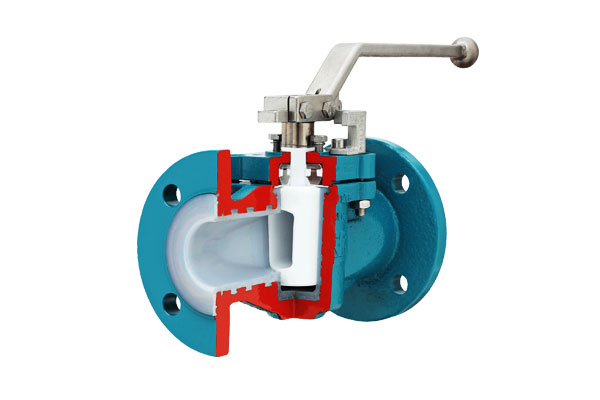
Klíč Komponenty ventilu
- Tělo: Houses the plug and provides inlet/outlet connections (přírubové, závitové, nebo svařované).
- Zástrčka: The rotating element, shaped either as a straight cylinder or a cone, containing the port(s).
- Sedadla: Provide sealing between plug and body; can be metal-to-metal surfaces or resilient inserts (PTFE, pryž).
- Zastavit & Handle/Actuator: Transmits torque from the operator (lever, gearbox, pneumatic or electric actuator) to the plug.
Operating Principles
Rotary Flow Control
Plug valves operate by rotating the plug around its axis—requiring just a quarter turn for full open or full close.
This allows rapid actuation: typical manual operation takes less than one second, and automated pneumatic or electric actuators can complete the stroke in 0.5–2 seconds.
Seal Formation
- Metal‑to‑Metal Seals: The plug’s hardfaced surface (often coated with Stellite) directly contacts the body’s bore.
Under line pressure, the plug presses into the body, enhancing the seal.
These valves withstand temperatures up to 550 °C and high‑pressure applications (ANSI třída 600 and above), but require higher break‑away torque (100–500 Nm for DN 50–200 valves). - Resilient (Měkký) Sedadla: Elastomeric or PTFE rings around the plug bore provide a conforming seal with minimal torque (10–50 Nm for DN 15–100 valves).
Soft‑seated plug valves achieve bubble‑tight shutoff per API 598 but are typically limited to temperatures below 200 °C and pressures under ANSI Class 300.
Požadavky na točivý moment & Aktualizace
Torque to operate a plug valve depends on size, seat type, and service conditions. As a rule of thumb:
- Soft‑seated DN 50 valves require ~15 Nm to open; soft‑seated DN 200 valves up to 60 Nm.
- Metal‑seated DN 50 valves may need 100 Nm; metal‑seated DN 200 valves up to 400 Nm.
Manual Actuation: Lever or handwheel, often with a gearbox for larger valves.
Pneumatic Actuation: Double‑acting or spring‑return cylinders for rapid, reliable quarter‑turn operation—cycle times <1 s.
Electric Actuation: Offers precise position control and feedback for integration with DCS/SCADA systems; typical stroke times of 2–5 s.
3. Types and Basic Designs of Plug Valve
Plug valve is engineered in various configurations to meet a wide range of process requirements.
Key design distinctions are based on lubrication method, plug geometry, port configuration, and internal flow path.
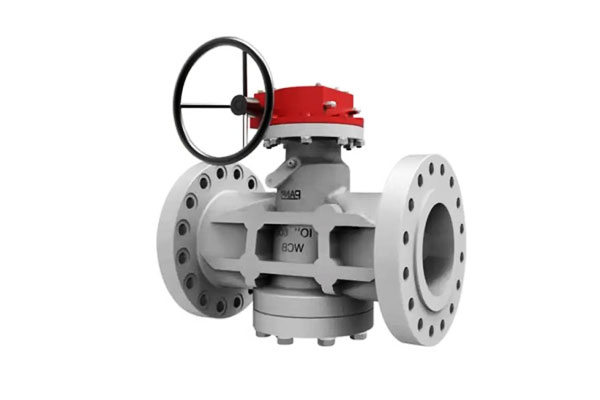
Lubricated vs. Non-Lubricated Plug Valves
- Lubricated Plug Valve
These valves rely on the injection of a sealant—typically a graphite- or PTFE-based compound—between the plug and the valve body.
The lubricant serves multiple roles: it reduces friction during operation, enhances sealing integrity, and provides a protective barrier against corrosive or abrasive media. - Non-Lubricated Plug Valve
These designs use self-lubricating materials—such as PTFE (Polytetrafluorethylen) with glass fiber reinforcement—for the seat or employ hard-coated plugs (NAPŘ., electroless nickel or hard chrome coatings with surface hardness > 60 HRC) to minimize friction.
Plug Configurations: Cylindrical, Conical & Trunnion-Mounted
- Conical (Tapered) Zástrčka
Featuring a taper that matches the valve body’s seat angle, conical plugs are self-aligning under line pressure, providing a more secure and leak-tight seal.
They are especially effective in high-pressure applications (≥2,500 psi / 172 bar). - Cylindrical Plug
These plugs have parallel sides and rely on spring-loaded seats or resilient inserts to maintain contact.
Cylindrical configurations are better suited for low to moderate pressure systems and are often used in compact or low-cost valve designs. - Trunnion-Mounted Plug
In this design, the plug is guided by upper and lower trunnions, which reduce torque requirements and wear on sealing surfaces.
This structure is preferred for large-diameter valves (≥12″) or extremely high-pressure applications (až do 15,000 psi / 1,034 bar), such as subsea or high-integrity pressure protection systems (HIPPS).
Multi-Port Plug Valve
- Three-Way Plug Valve
Designed with L-shaped or T-shaped plug passages to divert flow between three ports.
Common in mixing, bypassing, or diverting services (NAPŘ., blending hot and cold water streams, sampling systems, or line switching). - Four-Way Plug Valve
Include cross-shaped or double-L internal passages to reroute flow between two inlet-outlet pairs.
These are widely used in batch chemical operations and reactor feed alternation, allowing complex process sequences with minimal valve count.
Port Size Configurations: Full-Port vs. Reduced-Port
- Full-Port Plug Valve
The internal flow passage matches the diameter of the connecting pipeline (NAPŘ., a 2-inch valve has a 2-inch port).
This design minimizes pressure drop and is essential where flow efficiency or pigging is critical.
Typical Cv for 2″ full-port plug valve: ~50. - Reduced-Port Plug Valve
The flow path is one nominal pipe size smaller than the inlet/outlet connections (NAPŘ., a 2-inch valve with a 1.5-inch bore).
This design reduces material and manufacturing costs but introduces a higher pressure drop.
Typical Cv for 2″ reduced-port valve: ~ 30.
4. Materials and Construction of Plug Valve
The material selection and construction of a plug valve are critical to its performance, trvanlivost, and chemical compatibility in demanding industrial environments.
Each component—the body, zástrčka, sedadla, and internal seals—is engineered using materials tailored to withstand specific pressures, teploty, and process media.

Tělo & Plug Materials
| Materiál | Standard/Grade | Klíčové vlastnosti | Typické aplikace |
| Litina | ASTM A126 Class B | Hospodárný, suitable for low-pressure systems; limited corrosion resistance | Water supply, HVAC, municipal systems |
| Uhlíková ocel | ASTM A216 WCB | High mechanical strength; suitable for medium-high pressure/temperature | Olej & plyn, pára, petrochemical pipelines |
| Nerez | ASTM A351 CF8/CF8M (316Ss) | Vynikající odolnost proti korozi, especially against chlorides and acids | Chemical plants, food/pharma, mořské prostředí |
| Slitiny niklu | Hastelloy C-276, Inconel 625, Monel 400 | Superior resistance to aggressive chemicals and high temperatures | Acid handling, offshore, gas scrubbing |
| Tažné železo / Bronz | ASTM A536 / ASTM B62 | Good mechanical properties with cost-effectiveness | Zemědělství, pitná voda, general plumbing |
Sedadlo & Liner Materials
| Materiál | Teplotní rozsah | Klíčové funkce | Recommended Services |
| PTFE (Teflon) | –50°C to +230°C | Nízké tření, excellent chemical inertness | Jídlo, Pharma, corrosive chemical handling |
| Filled PTFE | –50°C to +260°C | Reinforced with glass or carbon for better wear and strength | High-cycle chemical systems |
| Elastomery (EPDM, FKM) | –30°C to +200°C | Good sealing flexibility, resistant to water, vzduch, and light hydrocarbons | Úprava vody, HVAC |
| Flexibilní grafit | –200°C to +540°C | High-temp resistance, fire-safe; used in critical sealing | Steam lines, rafinerie, high-temp pipelines |
| Kov na kov (Stellite, Chrome-Plated) | Up to 650°C | Hard sealing surface for erosive or abrasive fluids | Slurries, abrasive oils, fertilizer plants |
Mazadla (for Lubricated Plug Valves)
| Lubricant Type | Klíčové vlastnosti | Service Suitability |
| Graphite-Based Grease | High-temperature resistance, Nízké tření | Pára, heavy oil, refinery applications |
| PTFE / MoS₂ Compounds | Nízký koeficient tření, chemically inert | Corrosive gas, chemical feedlines |
| Silicone-Based Sealants | Neutral behavior, effective in a wide temperature range | Natural gas distribution, general service |
5. Performance Characteristics of Plug Valve
Plug valves are known for their simple operation, robust sealing, and bidirectional flow capabilities.
Však, their performance varies significantly based on design, výběr materiálu, and service conditions.
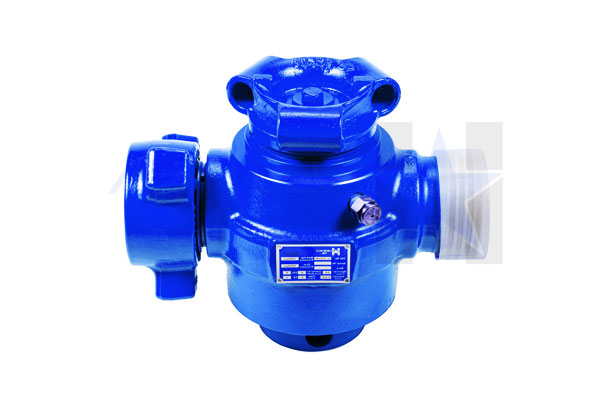
Hodnoty tlaku a teploty
Plug valves are rated according to industry standards such as API 599 a ISO 17292, which define safe operating pressure limits at various temperatures.
These ratings depend heavily on the valve’s body material a seat design.
| Materiál | ASME Class | Maximální tlak (psig) | Max Temp (° C.) |
| Uhlíková ocel (WCB) | 150 | ~285 @ 38°C | ~425°C |
| Nerez (CF8M) | 300 | ~740 @ 38°C | ~540°C |
| Slitina (Inconel 625) | 600 | >1,480 @ 38°C | >650° C. |
Seal Tightness & Třídy úniku
Plug valves, especially with soft seats or injected grease, can achieve Bubble-těsná uzavření. Leakage standards are tested per:
- API 598: Pressure test protocol for industrial valves
- ISO 5208: Valve leakage classification
- Leakage Class VI (měkké sedadlo): Essentially zero visible leakage
- Leakage Class IV (metal seat): Acceptable for most industrial gas and liquid services
Lubricated plug valves rely on grease to maintain seal integrity and require periodic re-injection, zatímco non-lubricated versions use elastomer or PTFE sleeves that can wear over time.
Charakteristiky toku (Hodnoty CV)
Plug valves exhibit linear or equal-percent flow control behavior, depending on port geometry (round vs. rectangular or V-notch).
Though primarily used for isolation, some plug designs allow moderate throttling.
- Full-Port Plug Valve (2-palec):
-
- Cv ≈ 45–55 (high flow efficiency)
- Reduced-Port Plug Valve (2-palec):
-
- Cv ≈ 25–35 (higher pressure drop)
CV (Koeficient toku) represents the flow rate in gallons/minute of water at 60°F that will flow through the valve with a 1 pokles tlaku psi.
Požadavky na točivý moment & Aktualizace
Plug valves typically require higher operating torque than ball or butterfly valves due to larger contact areas between the plug and seat.
| Typ ventilu | Typical Torque (Nm for 2″ Valve) |
| Lubricated Plug Valve | ~50–100 Nm (depends on lubricant film) |
| PTFE-Lined Plug Valve | ~30–60 Nm |
| Metal-Seated Plug | >100 Nm (requires gear or actuator) |
6. Application Fields of Plug Valves
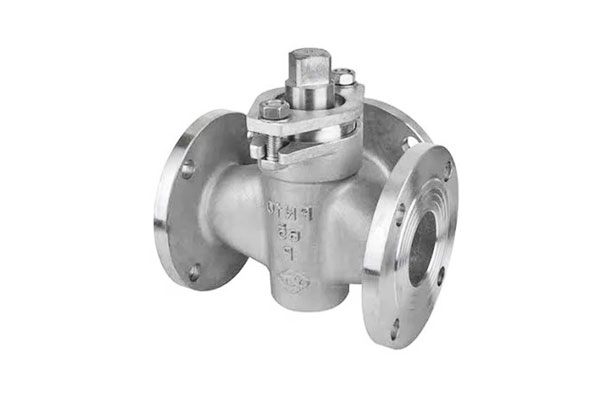
- Olej & Plyn (Proti proudu, Střední proud, Po proudu)
- Chemikálie & Petrochemický průmysl
- Voda & Čištění odpadních vod
- Výroba energie
- Buničina & Paper Industry
- Hornictví & Mineral Processing
- HVAC & Building Services
- Jídlo & Beverage Industry
- Marine & Offshore Engineering
- Farmaceutický & Biotech Industry
- Lng & Cryogenic Systems
- Ocel & Metallurgical Plants
- Rafinace & Bulk Storage Terminals
- Textile & Dyeing Industry
- Systémy požární ochrany
7. Advantages and Limitations of Plug Valve
Advantages of Plug Valve
- Jednoduchý design: Minimal internal components, making maintenance straightforward.
- Quick Operation: 90-degree quarter-turn allows fast open/close action.
- Tight Shutoff: Excellent sealing capability, especially with resilient seats or lubricant.
- Obousměrná těsnění: Seals effectively in both flow directions.
- Compact Size: Short face-to-face dimensions compared to gate or globe valves.
- Multi-Port Options: Available in 3-way or 4-way configurations for flow diversion or mixing.
- Vysoká odolnost: Suitable for abrasive, korozívní, or slurry media (with appropriate materials).
- In-Line Maintenance: Many designs allow servicing without removing the valve from the pipeline.
Limitations of Plug Valve
- High Operating Torque: Especially in metal-seated or larger valves; may require gear or actuator.
- Friction Wear: Metal-to-metal designs can experience galling and wear over time.
- Lubrication Needs: Lubricated plug valve require periodic re-greasing to maintain sealing and ease of operation.
- Náklady: Can be more expensive than ball valves in similar pressure/temperature ranges.
- Limited Throttling: Not ideal for precise flow control due to potential erosion and wear in partially open positions.
- Omezení velikosti: Less common in sizes above 24 inches due to torque and manufacturing limits.
8. Srovnání: Plug Valve vs. Ball, Brána, and Butterfly Valves
| Aspekt | Zástrčka | Kulový ventil | Brána ventil | Ventil motýlů |
| Design | Simple body and tapered/cylindrical plug | Rotating spherical ball with bore | Rising wedge or parallel gate disc | Disc rotates on a central shaft |
| Operace | 90° quarter-turn | 90° quarter-turn | Víceotáčkový (slow) | 90° quarter-turn |
| Schopnost těsnění | Vynikající (especially lubricated types) | Velmi dobré (těsné uzavření) | Dobrý (metal-to-metal contact) | Moderate to good (depends on seat design) |
| Škrtící | Omezený, not recommended | Omezený (not ideal for throttling) | Acceptable for minimal control | Fair to good control depending on design |
| Požadavky na točivý moment | Vysoký, especially for larger valves | Mírný | Nízký až vysoký (depending on pressure/size) | Nízký až střední |
| Údržba | Mírný (lubrication required for some types) | Nízký (minimal maintenance) | Vysoký (seat wear, stem packing) | Nízký až střední |
| Suitability for Slurry/Abrasive Media | Dobrý (especially with metal seats) | Chudý (may clog or erode ball seat) | Veletrh | Fair to good with suitable disc materials |
| Multi-Port Options | Ano (3-way, 4-way) | Ano (limited 3-way availability) | Žádný | Žádný |
| Pokles tlaku | Nízký až střední (depends on port size) | Nízký (full bore design) | Nízký | Mírný |
| Space Requirement | Compact face-to-face, larger actuator for torque | Kompaktní | Long face-to-face (vertical space needed) | Very compact |
| Náklady | Mírné až vysoké (especially metal-seated) | Mírný | Nízký až střední | Nízký až střední |
| Aplikace | Chemikálie, olej & plyn, kaše, multi-directional flows | General use, voda, olej & plyn, shutoff | Vodárny, izolace, non-frequent operation | HVAC, voda, low-pressure gas, large pipe diameters |
Shrnutí:
- Use Plug Valves when you need tight shutoff, obousměrná těsnění, or multi-port flow in tough services like slurries or chemicals.
- Kulové ventily are ideal for fast shutoff and minimal pressure drop in clean media applications.
- Brány ventily suit infrequent isolation in large-bore systems.
- Motýlkové ventily excel in space-limited, low-pressure environments with large diameters.
9. Dimenzování, Selection & Installation Guidelines
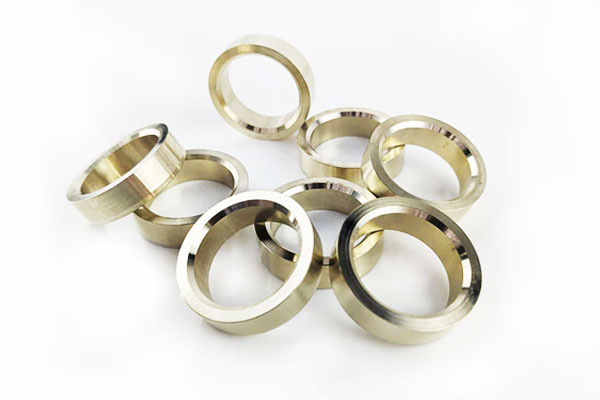
- Media and Conditions: Match body and seat materials to fluid chemistry, teplota, a tlak.
- Dimenzování: Use Cv calculations to ensure required flow at expected ΔP; select actuators to deliver 1.5× break‑away torque.
- Instalace: Orient plug vertically in lubricated valves to prevent grease pooling; maintain 1× valve length of straight pipe on each side for optimal performance.
10. Údržba, Inspekce & Odstraňování problémů
- Mazání: Every 6–12 months or 5,000 cykly; use manufacturer‑approved grease.
- Seat Replacement: In many designs, seats can be changed in-line without body removal.
- Common Issues: Galling on metal seats remedied by relubrication; graphite packing leaks corrected by repacking; plug erosion addressed by Stellite overlays or seat refurbishment.
11. Standardy, Certifikace & Testování
- API 599: Inspection and test procedures.
- ISO 17292: Performance requirements for plug, míč, and butterfly valves.
- MSS SP‑79/SP‑80: Guidelines for lubricated and non‑lubricated plug valves.
- Certifikace: API Monogram, CE marking, SIL ratings for safety instrumented systems.
12. Závěr
Plug valves offer a unique blend of simplicity, rychlost, a všestrannost across a diverse array of process industries.
By carefully selecting body, zástrčka, and seat materials—and by adhering to best practices in sizing, instalace, and maintenance—engineers can leverage plug valves for reliable isolation, diversion, and rudimentary flow control in virtually any fluid service.
TENTO: Vysoce přesná řešení odlévání ventilu pro náročné aplikace
TENTO je specializovaný poskytovatel služeb odlévání precizních ventilů, Dodávání vysoce výkonných komponent pro průmyslová odvětví, která vyžadují spolehlivost, Integrita tlaku, a rozměrová přesnost.
Od surových odlitků po plně obrobená tělesa a sestavy ventilu, TENTO nabízí end-to-end řešení navržená tak, aby splňovala přísné globální standardy.

Naše odborné znalosti odlévání ventilů zahrnují:
Investiční obsazení pro tělesa ventilů & Oříznout
Využití technologie lití ztracených vosků k výrobě složitých vnitřních geometrií a komponent ventilu s přísným tolerancem s výjimečnými povrchovými úpravami.
Lití písku & Odlévání formy skořápky
Ideální pro tělesa střední až velká ventily, příruby, a kapoty-nabídka nákladově efektivního řešení pro drsné průmyslové aplikace, včetně oleje & Výroba plynu a energie.
Přesné obrábění pro ventil & Integrita těsnění
CNC obrábění sedadel, vlákna, a těsnicí tváře zajišťuje, že každá část obsazení splňuje požadavky na dimenzionální a těsnění.
Rozsah materiálu pro kritické aplikace
Z nerezových ocelí (CF8/CF8M/CF3/CF3M), mosaz, tažné železo, K duplexu a vysoce avorovým materiálem, TENTO zásoby odlitky ventilů postavené k výkonu v korozi, vysokotlaký, nebo prostředí s vysokou teplotou.
Ať už potřebujete ovládané ventily na míru, kuželkové ventily, Globe ventily, brány ventily, nebo produkce průmyslových odlitků ventilu s vysokým objemem, DEZE is your trusted partner pro přesnost, trvanlivost, a zajištění kvality.
Časté časté
When should I choose a plug valve over a ball valve?
Zvolit kuželkové ventily in high‑temperature or abrasive services, or where simple quarter-turn, bidirectional operation is needed.
How often should a lubricated plug valve be re-lubricated?
Typically every 6–12 months or after 5,000–10,000 cycles, depending on service severity.
Can plug valves be used for throttling service?
Limited throttling is possible with equal‑percent plugs, but seat wear increases; globe valves excel at precise flow control.
What causes plug valve leakage and how is it fixed?
Wear or damage to seats and plugs leads to leakage; remedy via seat replacement, plug re-lapping, or re-lubrication for metal‑to‑metal valves.



